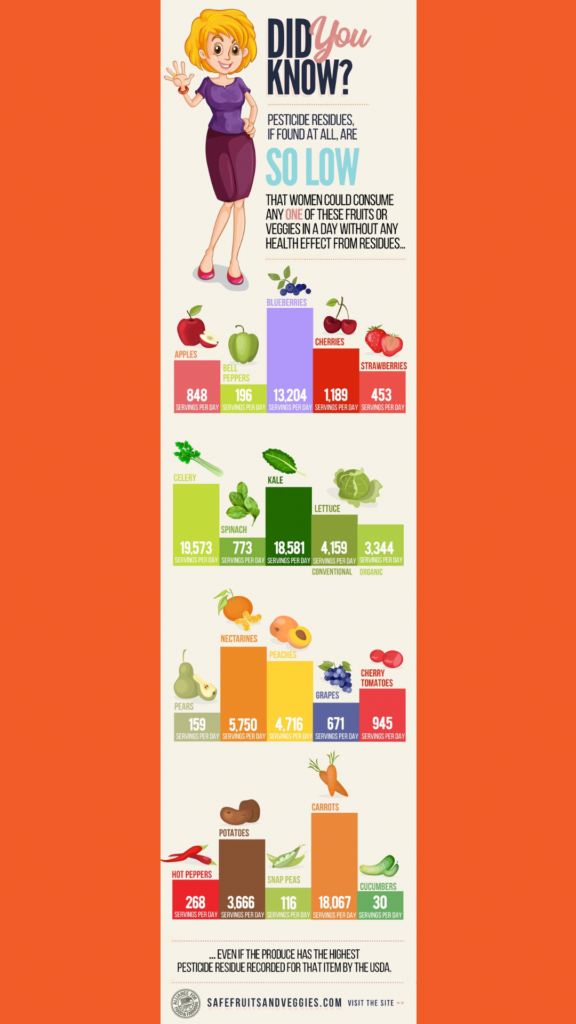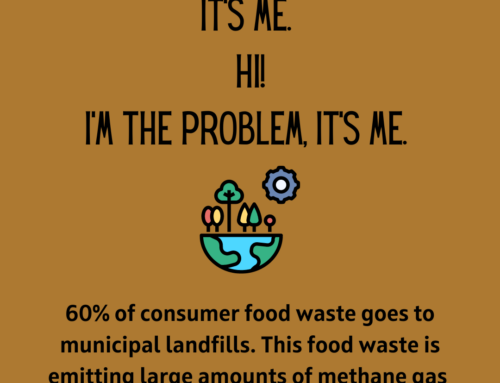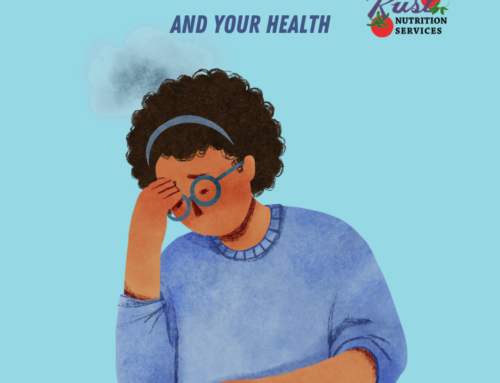I am a nutrition advisor to Bayer Crop Science, but the material shared here is evidence-based and all thoughts are my own.
Social media has become a black hole of misinformation (and time).

This is certainly true when it comes to food information, diets, and nutrition.
Your grandmother probably told you to “eat your vegetables” and she was right. Truth be told, the definition of “balanced diet” and the foods that support health and prevent disease, haven’t changed much in the past 40 years.
Getting 6-10 servings of fruits and vegetables into your day is good for your health. We know they help lower blood pressure, support our immune system, and help manage weight. Yet only one in 10 Americans eat enough fruits and veggies daily.
Actual Pesticide Residues
The graphic below outlines how many servings of a fruit or vegetable you could eat without any adverse health effect from the pesticide residue. A serving of strawberries for instance is one cup. An adult woman could eat over 450 CUPS of strawberries in a day, and still be within the safe level.
If you are thinking there is no “safe level of pesticide residue?”, see this post to learn more about the reality of risk.

Organic or Conventional?
Here’s the deal. The reason I talk about fear-mongering in the grocery aisles is that it’s often false information that impacts nutrition for everyone. Whether you choose organic or conventional, your fruits and veggies are nutritious and safe to eat. However, due to the misinformation online, the average consumer doesn’t see it that way.
According to a 2022 consumer survey conducted by the Alliance for Food and Farming, inaccurate safety statements about fruits and vegetables and pesticide residues resulted in low income shoppers reporting they’d be less likely to purchase ANY fruits or vegetables – organic or conventional.
The pesticide residues that may be on your produce is in such trace amounts, that it’s not harmful.
Let’s enjoy them, and cancel the fear-mongers.




